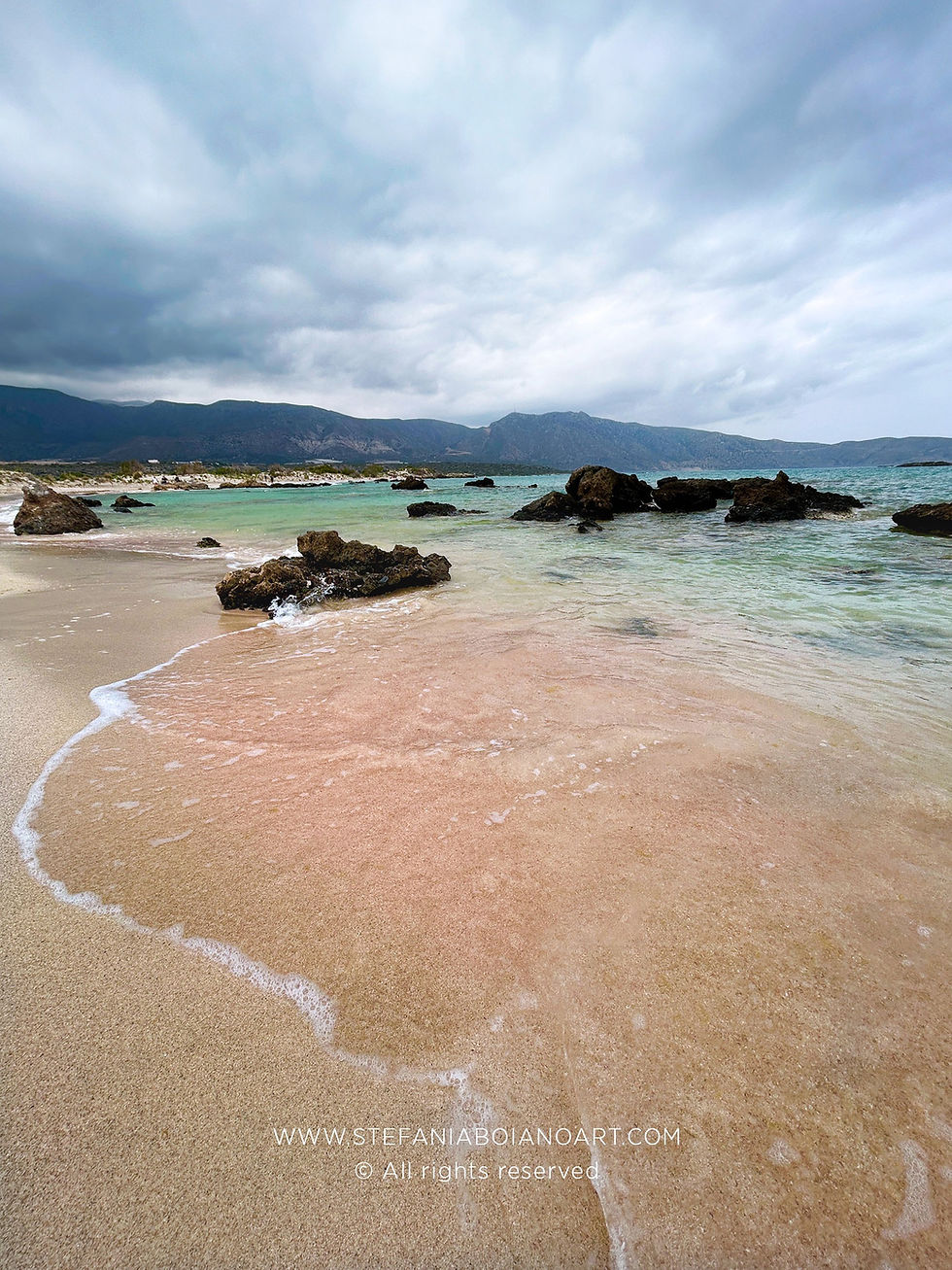The pink of Elafonisi Beach in Crete
- Stefania Boiano
- May 12, 2021
- 3 min read
Updated: May 31
As a landscape painter, it is hard not to get excited for a place that has a unique colour palette.
Elafonisi Beach, located on the southwest coast of Crete, is often ranked among the top 10 beaches in the world. Before my visit, I had come across countless images online that captured the stunning lagoon and its wild, unspoiled landscape. However, I noticed that in some of these photos, the pink hues of the sand seemed almost too intense, which led me to question their authenticity. Were these vibrant colours real, or were they the product of digital enhancements?
I chose to visit this island in May, a time when the land exudes a quiet atmosphere without the summer crowds and without the burning temperatures. Curiously, it seemed as if the British weather had followed me, as the predominant colour during my stay was a subdued, greyish blue. Luckily this muted backdrop created a beautiful colour combination with the pink hues :)

The photo below captures the early moments of sunset, unveiling a dreamlike scene where the turquoise and aqua green waters blend harmoniously with the warm pink tones of the sand.

The richness of the pink, of course, varies depending on lighting conditions, weather, and specific spots along the beach. I noticed that the pink hues were more intense in the areas beyond the lagoon, a beach (photo here above) that you can easily reach by walking in the shallow and crystal clear waters.
But why is the sand pink?
Being an enthusiast of tiny worlds, as soon as I set foot on the pink sand, I explored it up close, holding a handful of sand revealed a hidden enchantment beyond the pink hue itself.
Intuitively, I had a sense that the pink colour might be linked to fragments of corals and seashells. But witnessing the variety of shapes, sizes, and textures of these tiny sea creatures in person filled me with delight, like stepping into a miniature museum curated by the sea itself.

Together with the fragments of corals and seashells, the scientific answer behind the pink is foraminifera, also known as "forams": tiny marine micro-organisms.
“Foraminifera are amoeba-like, single-celled protists (very simple micro-organisms). They have been called ‘armoured amoebae’ because they secrete a tiny shell (or ‘test’) usually between about a half and one millimetre long. They get their name from the foramen, an opening or tube that interconnects all the chambers of the test. “ - From the British Geological Survey
Their shell is made of calcium carbonate — the same material of marine organisms like corals, lobsters, and mussels. When they die, their shells remain forming part of the ocean floors. Their shells have settled on the seafloor for 500 million years, and are used by scientists to study the earth's changing climate.
If like me you are curious to know more about foraminifera this article I found on the website of the University of Berkeley, California tells you interesting facts https://ucmp.berkeley.edu/fosrec/Wetmore.html
Back to colour and paint! How to mix warm pinks in watercolour?
The pink on the Elafonisi beach is quite warm.
I find that these combinations below create a realistic “Elafonisiac” pink palette :)
Burnt sienna + alizarin crimson
Burnt sienna + red cadmium light
Burnt sienna +
Qui foto swatches








Comments